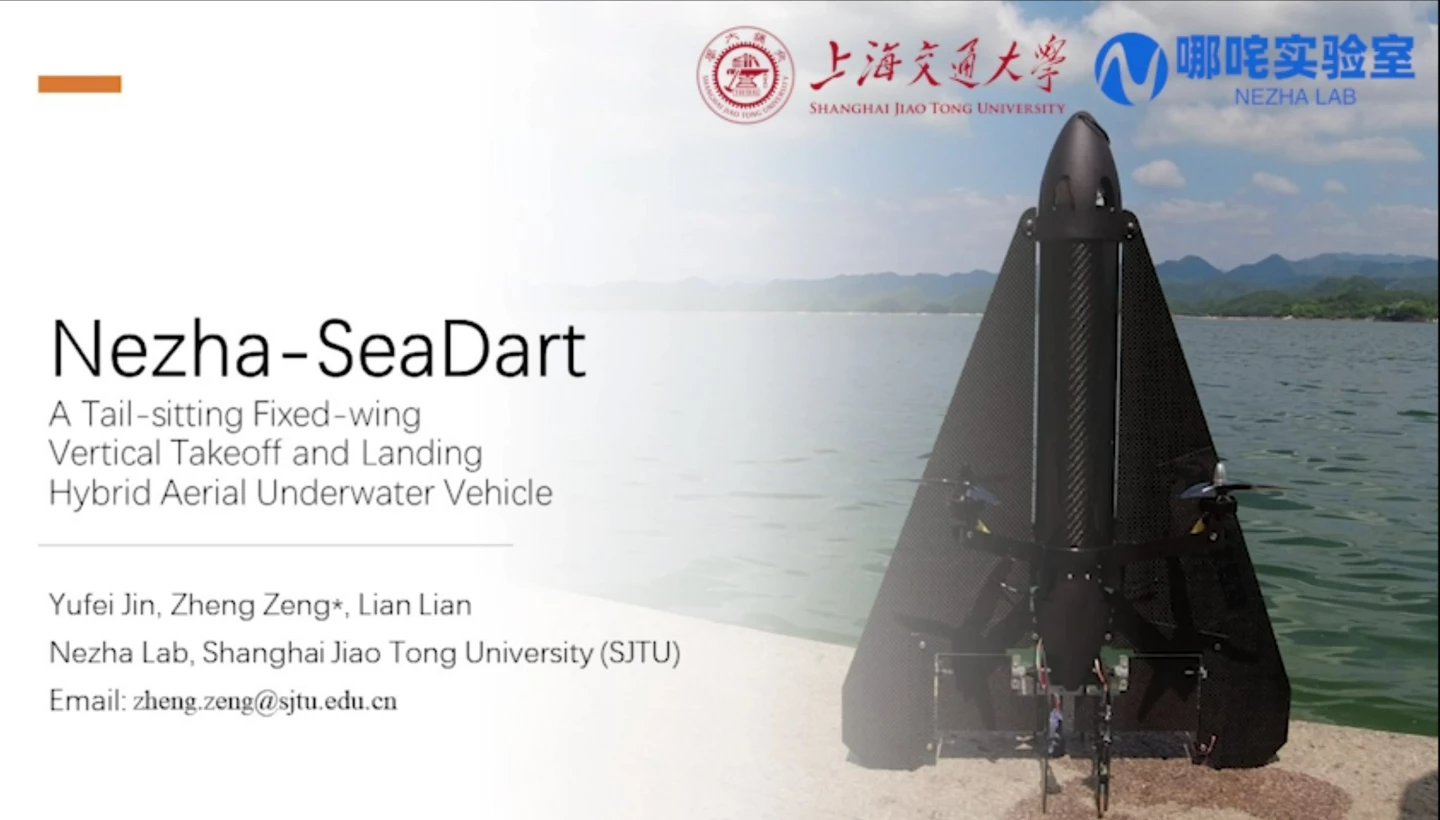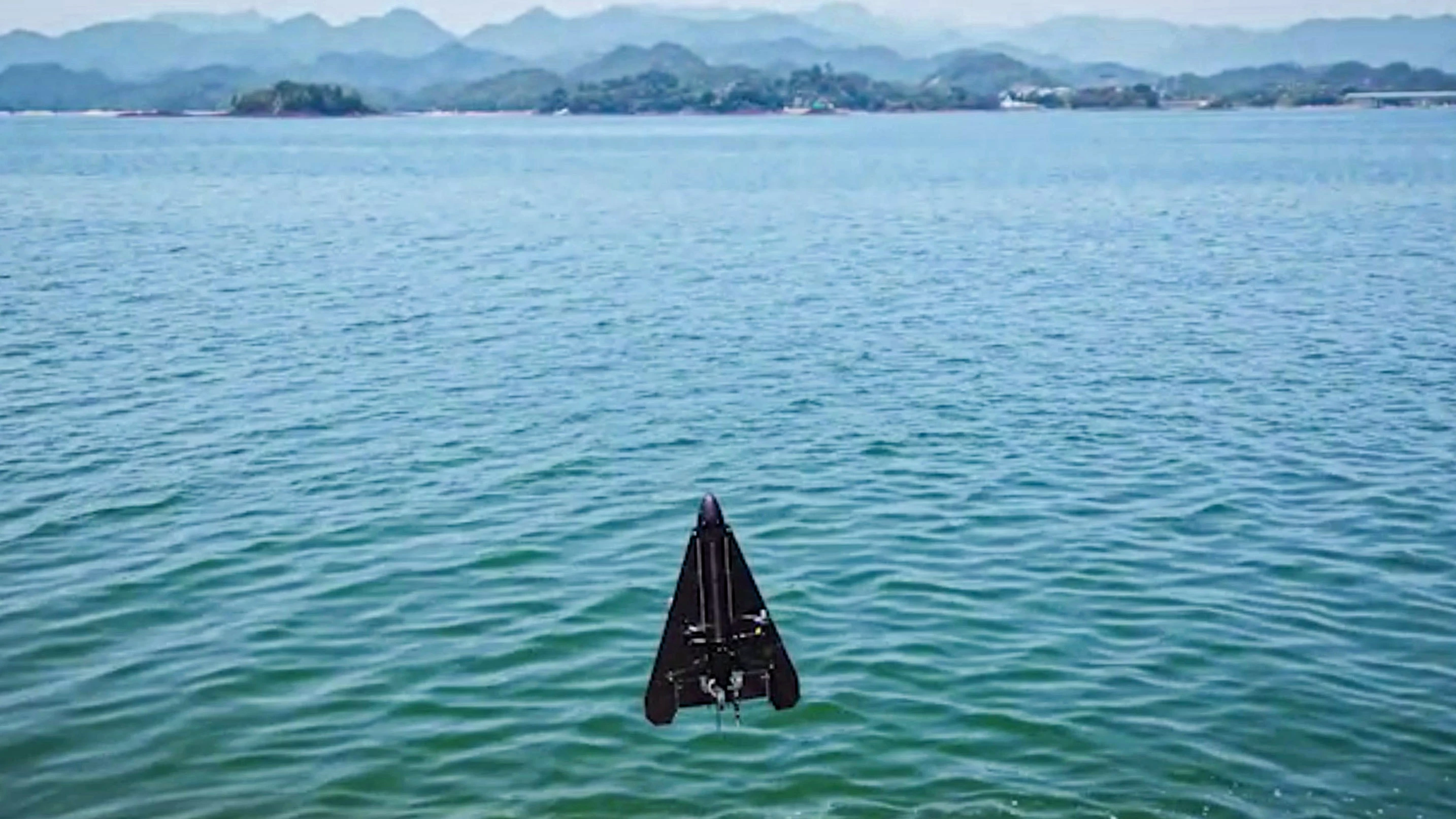Researchers from Shanghai Jiao Tong University (SJTU) have unveiled a new type of amphibious vehicle that can hover like a drone, take winged flight like a plane, then dive at high speed underwater like nothing else – called the Nezha-SeaDart.
The name Nezha refers to a deity common across Chinese Buddhism, Confucianism, Taoism and other folk religions. He was famous for his great strength, bravery and skill with magical weapons, and venerated as a protector of the innocent agains evil. He also emerged from his mother's womb a fully-grown boy, but let's not dwell on that.
Named for this god character and classed as a HAUV (hybrid aerial underwater vehicle), the Nezha-SeaDart is a tail-sitting, electric Vertical Take-Off and Landing (eVTOL) craft. But it's not just an eVTOL. It's capable of taking flight and landing on its tail on land, or on the water. It can also dive at high speed, nose first into the water – like a Kingfisher – turning into a fully submersible vehicle able to complete tasks underwater, before popping back out and taking winged flight without skipping a beat.
While the world has already seen many examples of seaplanes and helicopters that land and take flight from the water, none have been able to dive below the water's surface to operate and survive to take flight again.
The Nezha-SeaDart looks as though it's taken some of its styling cues from the US Navy's 1950s prototype Covair Sea Dart – the only seaplane to have ever flown supersonic before it experienced a 'rapid unscheduled disassembly' mid-flight and was scrapped. The SeaDart has the unique twist of having four propellers for aerial flight and eight underwater thrusters. It uses a combination of its aerial props and thrusters for autonomous underwater navigation.

The Nezha-SeaDart was recently put through its paces in a ten-day-long test in China's Thousand Islands Lake of Zhejiang Province. The purpose of the test was to prove its ability to cross between land, sea and air seamlessly.
Its delta-wing configuration generates enough lift that can cruise like a fixed-wing aircraft. Watching the video, it's hard not to think it looks like a UAP/UFO the way it flies around in seemingly impossible ways.
Possible use cases for an unmanned HAUV like the Nezha-SeaDart could include marine research, search and rescue, or even just marine exploration. And sneakily blowing things up, of course. Watch it in action in the clip below.
This isn't the first time we've seen China's "land, sea, and air" capabilities. Prior to the SeaDart came the Nezha-IV. It was able to operate as deep as 164 ft (50 meters) in rough sea conditions, hover in the air for 15 minutes, and it had a 4.35 mile (7 km) range flying at 22.4 mph (36 kph).
And of course, cheap consumer websites like Alibaba and Temu are teeming with dozens of styles of radio-controlled toy planes that are capable of flying and zooming around as a boat for under 40 bucks, but none with the full autonomy and submersibility that the Nezha-SeaDart is said to have.
Chinese drone technology has proven to be some of the best in the world – DJI thoroughly dominated the emerging drone market over the last decade with tightly-integrated, well-thought-out products like the Mavic and Inspire.
As is often the case with Chinese innovations, it's difficult to ascertain all of the facts here – and thus, it's hard to say whether the SeaDart might be headed for military or commercial use, or to Temu with a sticker kit on it. Either way, very cool!
Source: Wiley Online Library






